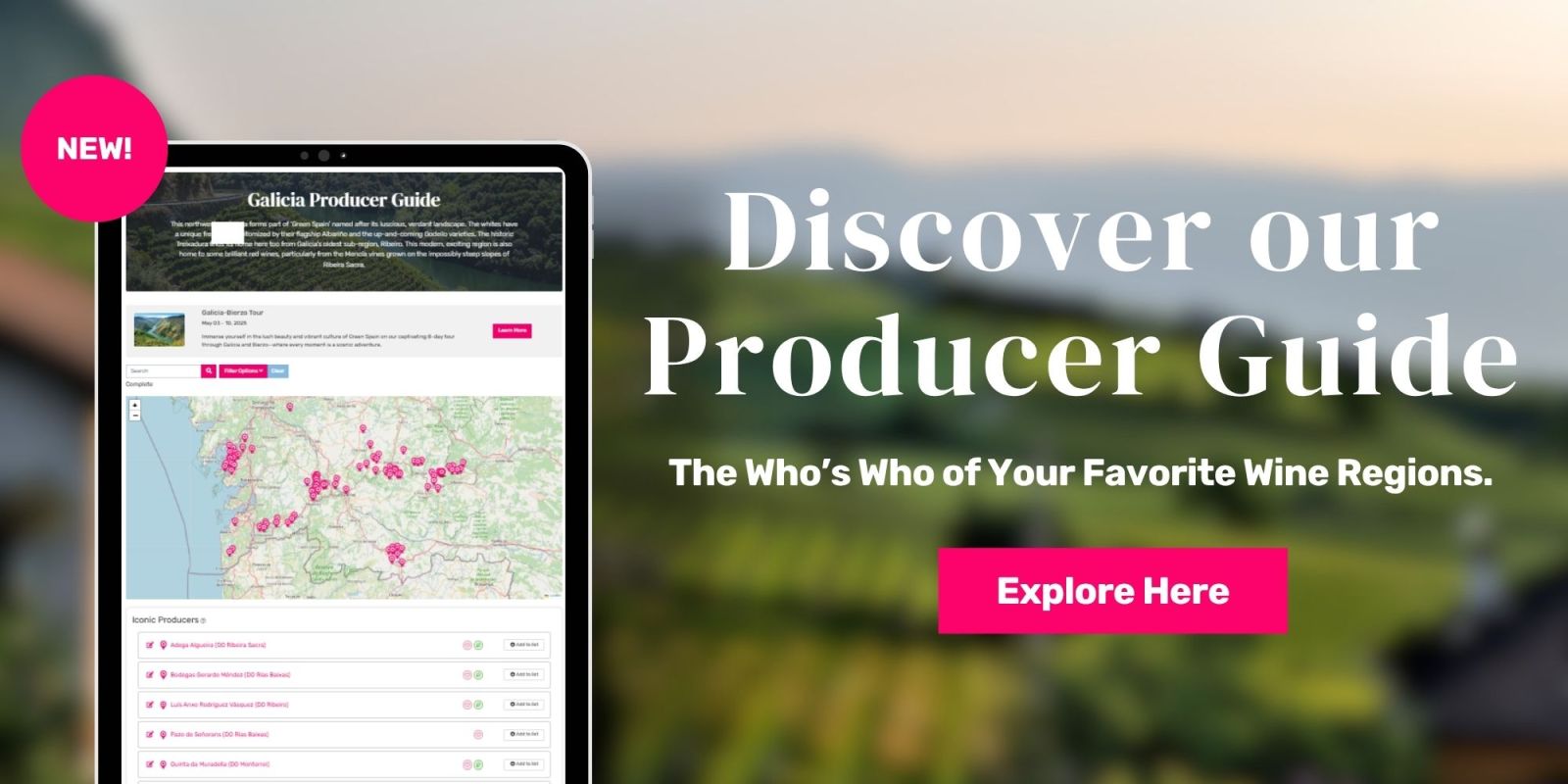BLOG
5 Iconic Alsace Rieslings Every Wine Lover Should Know
Wine Scholar Guild
Regional Spotlight
Why Alsace Riesling Is a Collector’s Favorite — and Still Under the Radar
There are certain wine styles that are adored by wine collectors and professionals alike, but remain relatively unknown to more casual wine drinkers. Alsace Riesling is one of them. So why is it so adored by wine lovers?
To begin with, Riesling is an unusually versatile grape. It can make delicious wines across the spectrum from bone dry to intensely sweet; it can even make refined sparkling wines. Another factor is its ability to develop in bottle – the best examples can age for decades.
It also subtly changes its flavor profile and textural detail from one site to another. That’s why Alsace is such a perfect place to explore the variety; the region is a patchwork of countless soil types, producing myriad different expressions.
The typical style of Alsace Riesling however is dry, crisp and intensely flavored. You can expect citrus fruits, green apple and occasionally stone fruits; floral notes and spices such as lemongrass are also common, with honey and kerosene as the wines mature.
There are countless brilliant producers from this part of the world; here are five of the most iconic Rieslings from Alsace.
Domaine Albert Boxler: Grand Cru Sommerberg Riesling from Niedermorschwihr
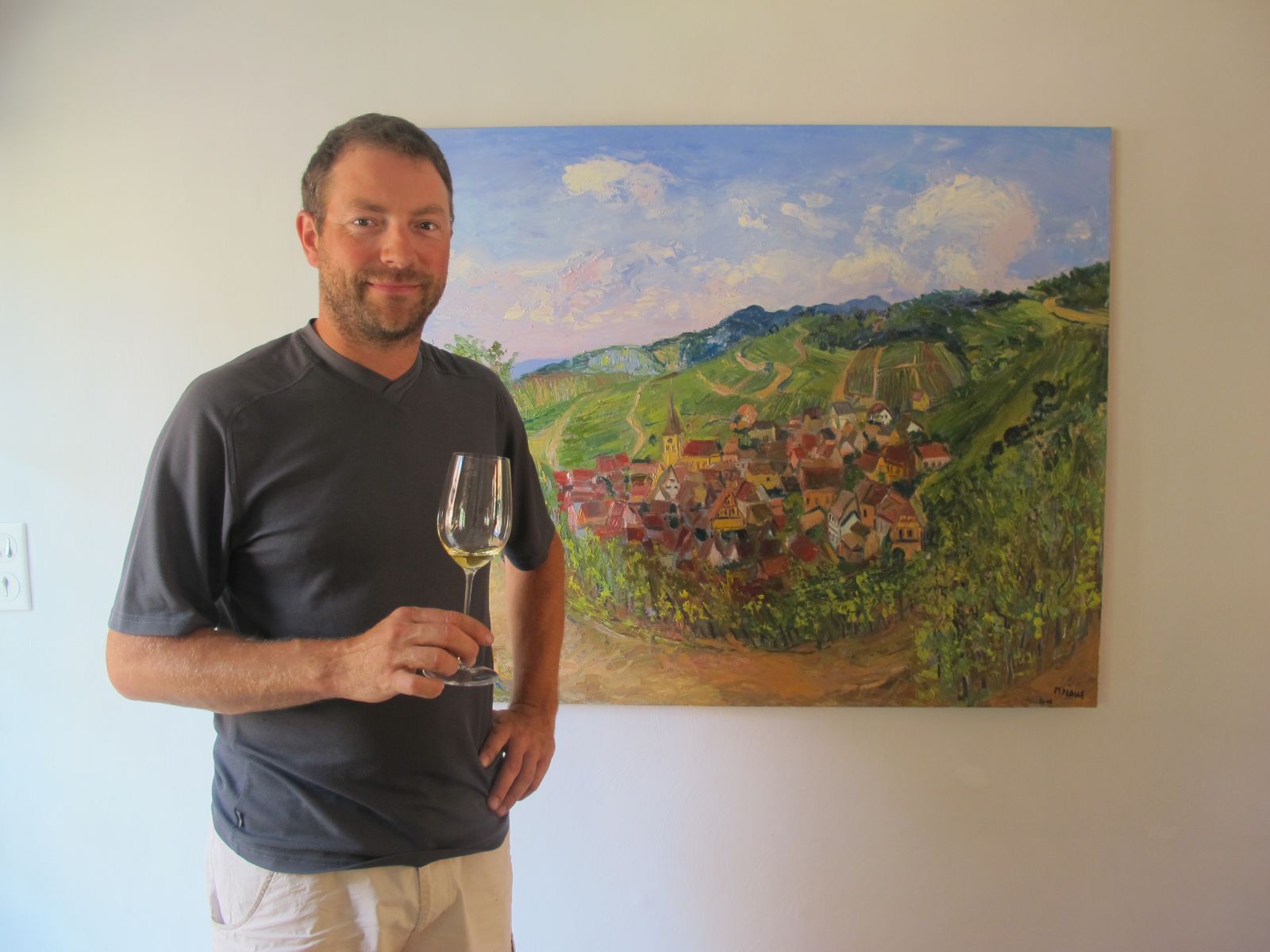
Jean Boxler. Matt Walls
![]()
Domaine Albert Boxler is located in the tiny village of Niedermorschwihr, 8 km/5 mi west of Colmar, the wine capital of Alsace. The estate dates back to 1673, but it only started bottling wines to sell commercially in 1943. Under Jean Boxler, this winery has become one of the most lauded addresses in the region.
The estate makes a number of different Rieslings, the best of which come from Niedermorschwihr’s grand cru, the granite amphitheater of Sommerberg, one of the steepest in the region.
The estate’s Riesling Grand Cru Sommerberg is a wine of great intensity and purity. Jean Boxler also creates a number of additional micro-cuvées from this site to express the subtle differences in terroir. They are usually differentiated by an initial, such as E for Eckberg (their highest, coolest, stoniest parcel within the grand cru); D for Dudenstein (granite and limestone soils with more clay); V for the Vanne (an old-vine cuvée).
The enchanting labels were originally designed by the cousin of Albert Boxler, and still remain in use today.
Domaine Weinbach: Riesling Alsace Grand Cru Schlossberg Cuvée Sainte Catherine
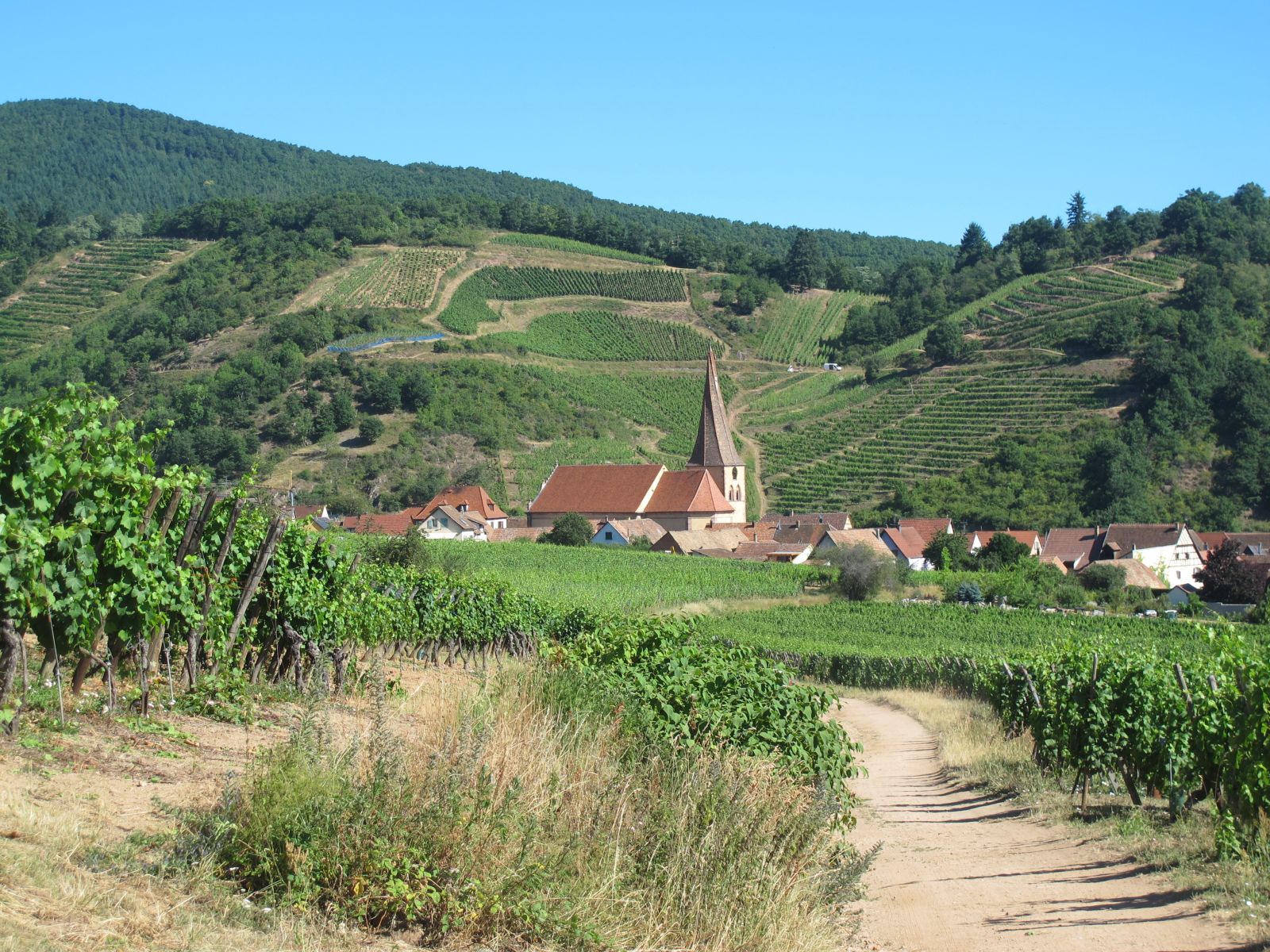
![]()
Just near Kaysersberg, southwest of Colmar, at the foot of the imposing hill of Schlossberg, is Domaine Weinbach. The name Weinbach refers to the “wine stream” that runs through the estate, which was established in 1612 by a congregation of monks.
The estate was confiscated and sold during the French Revolution, and was bought by the Faller family in 1898. Today it is run by Catherine Faller and her sons Eddy and Théo.
Their 38 ha/94 ac of vineyards that surround their ancient farmhouse are all cultivated biodynamically, and include four grands crus (Schlossberg, Mambourg, Furstentum and Marckrain). Their Clos des Capucins refers to the walled vineyard that was once worked by the friars.
Domaine Weinbach’s range is divided into varietal wines and then an upper level of wines labelled by vineyard origin or under special cuvée names.
Their Riesling Alsace Grand Cru Schlossberg is excellent, but their Cuvée Sainte Catherine is even better, coming from a parcel of their oldest vines from this exceptional granitic terroir. It has even more depth and intensity, making for one of the greatest Rieslings of Alsace.
Note: The bottle in the image is a Schlossberg Grand Cru, not Schlossberg Grand Cru Cuvee Sainte Catherine.
Domaine Barmès-Buecher: Biodynamic Grand Cru Hengst Riesling from Wettolsheim
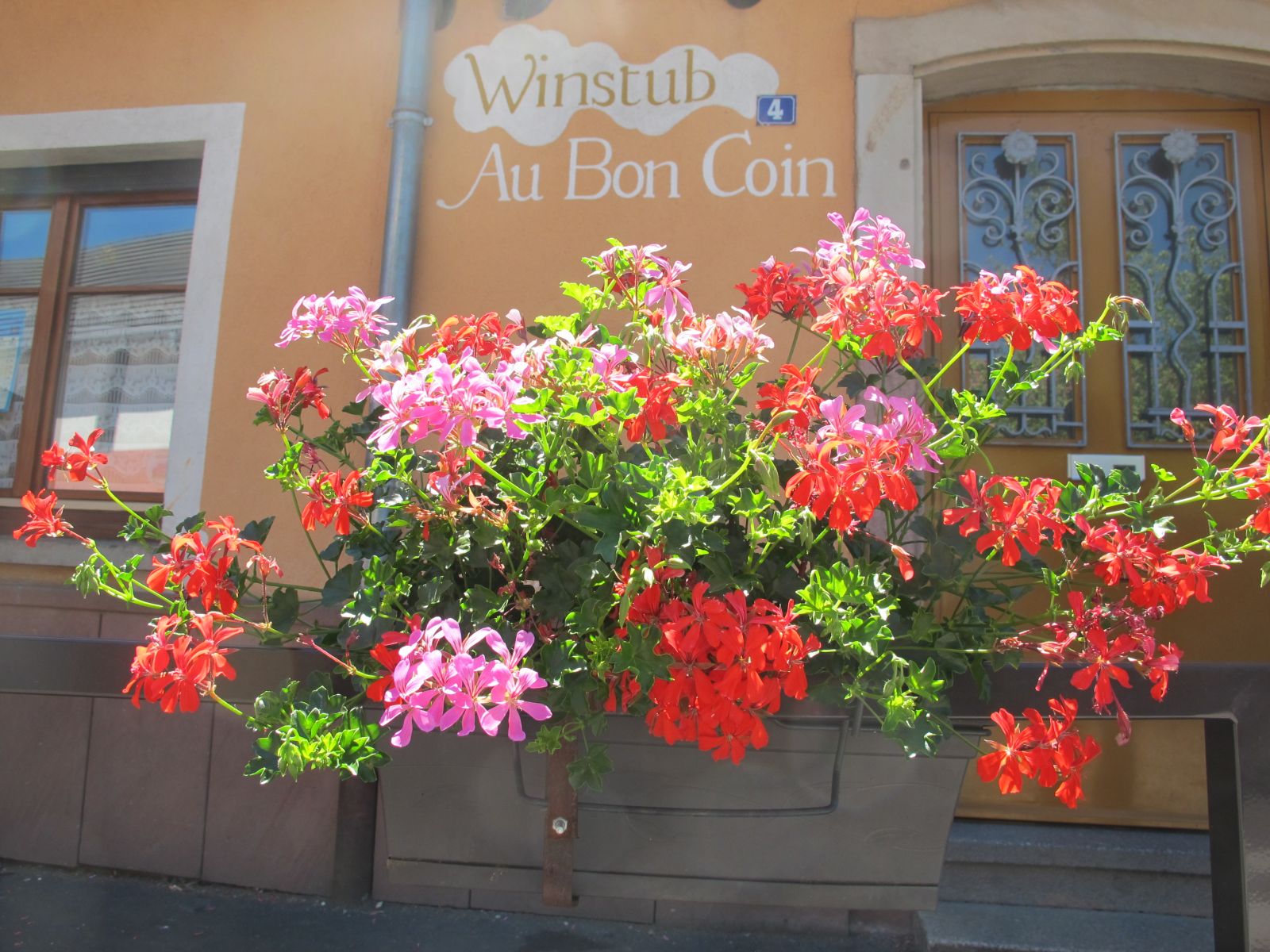
Winstub in Alsace. Matt Walls
![]()
Geneviève Buecher and François Barmès married in 1985, establishing Domaine Barmès-Buecher by joining two family properties. Following the tragic accidental death of François in 2011, their children Sophie and Maxime took over the family estate; Maxime controls the vineyards and cellar, Sophie looks after the commercial side.
Since then, Barmès-Buecher has quickly but quietly risen to the top ranks of Alsace producers.
They are located on the outskirts of Colmar in the village of Wettolsheim; their 18 ha/44 ac of vineyards have been certified biodynamic since 2001. They have parcels of three grands crus: Hengst, Steingrubler and Pfersigberg. Though rightly famous for the quality of their Pinot Noirs, their Riesling Grand Cru Hengst is also worthy of high praise.
Hengst means ‘stallion’ in the local dialect. This southeast-facing clay limestone plot produces powerful wines that marry richness and intensity; Barmès-Buecher’s Riesling from this site displays ripe apricot and orange fruit along with zesty acidity.
Delicious young, but ageworthy too, this is an exceptional wine from a rising star of the region.
Domaine Marc Kreydenweiss: Riesling Alsace Grand Cru Kastelberg
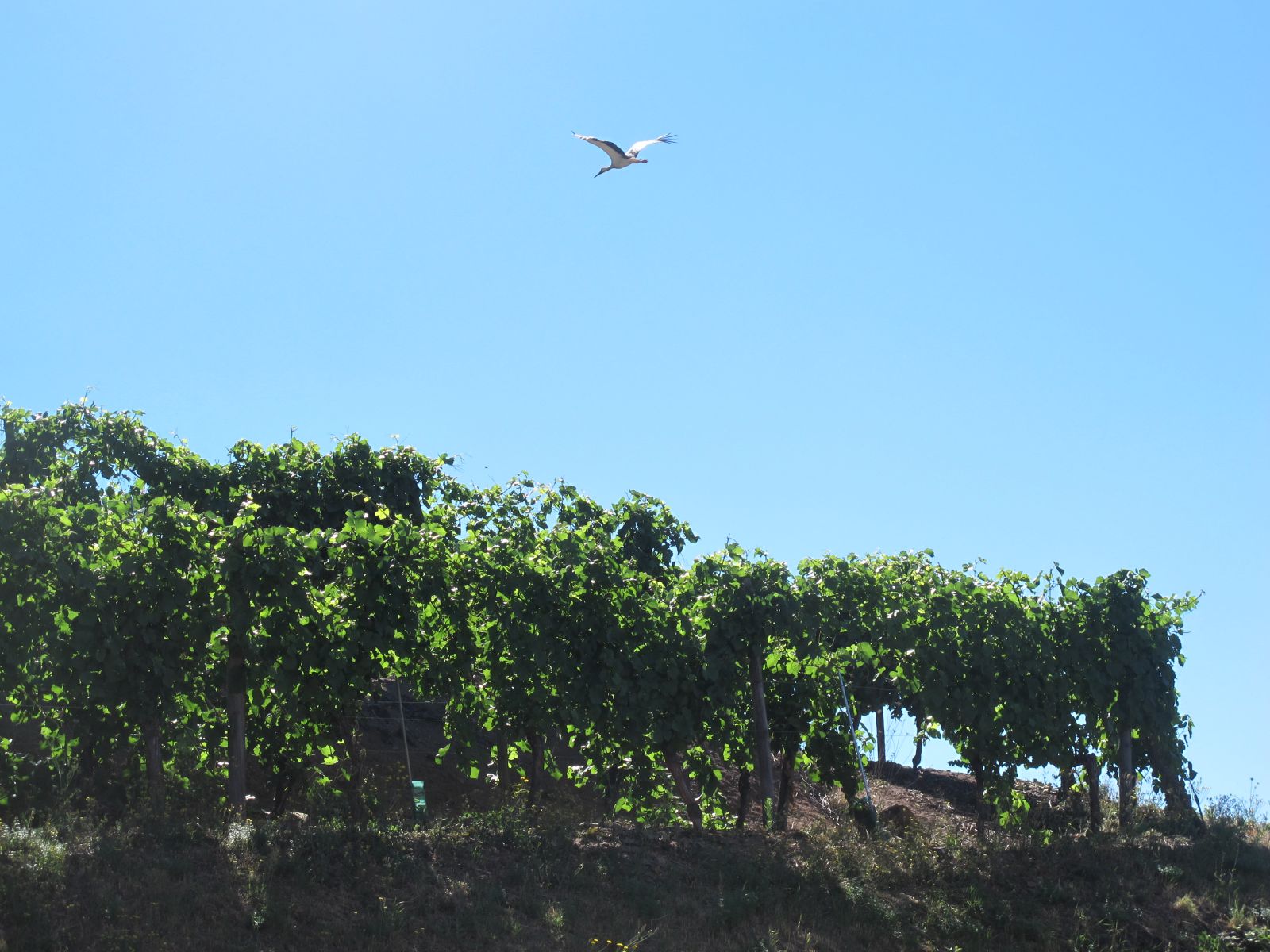
Stork flying over vineyards in Alsace. Matt Walls
![]()
Kastelberg is a southeast-facing hillside of black slate in the village of Andlau in the north of Alsace. It’s long been known for quality; the first documents mentioning vineyards on this site date back to 1064.
It’s a great terroir, particularly for Riesling, and Domaine Marc Kreydenweiss makes an incredible example.
Based in the village of Andlau, they are lucky enough to own parcels of vines in three local grands crus, including Kastelberg, as part of their 13.5 ha/33.4 ac estate.
Marc himself was a pioneer of biodynamic viticulture in Alsace, having worked this way since 1989. His son Antoine took over the estate in 2007, and he remains faithful to this philosophy.
He has 0.9 ha/2.2 ac of Riesling in grand cru Kastelberg, at an elevation of between 240 m/787 ft and 310 m/1017 ft; the vines are over 50 years old. This plot produces a wine with tension, salinity and vibrant acidity with a spicy aromatic profile. It needs several years in bottle before showing its best, then can then go on to develop for 25 years or more in good vintages.
Domaine Zind Humbrecht: Riesling Alsace Grand Cru Rangen de Thann Clos Saint Urbain
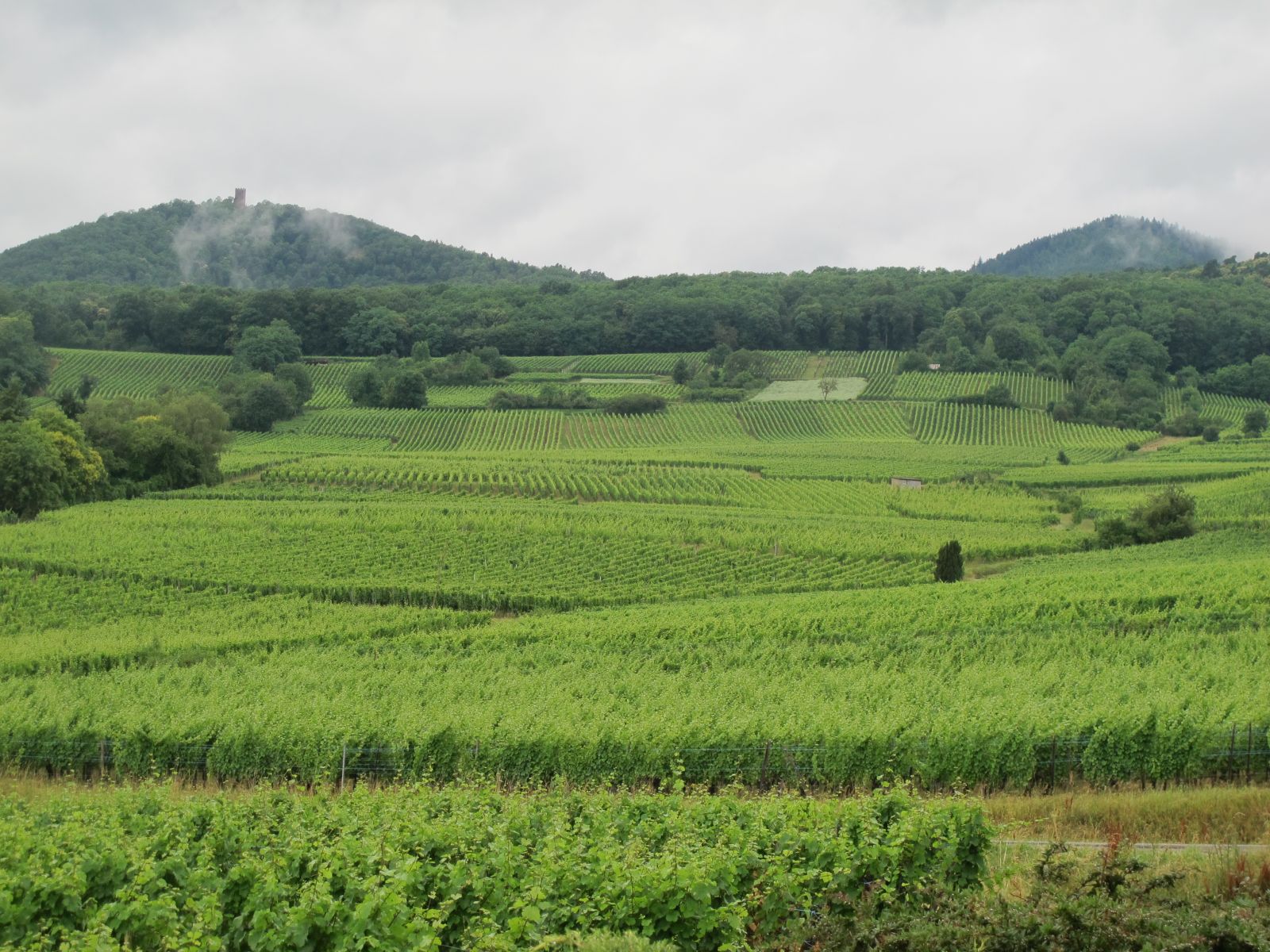
![]()
The highly influential Domaine Zind Humbrecht was created in 1959 and is today run by Olivier and Margaret Humbrecht – but winegrowing has been the Humbrecht family profession since 1610.
Their 42 ha/104 ac of vineyards are farmed biodynamically, and they own a treasure trove of grands crus – including Rangen de Thann, at the far south of the region.
This vineyard is composed of sedimentary volcanic soils, and is late to ripen due to its high elevation. Thanks to its steep, south-facing aspect however, ripeness catches up during the growing season, which can continue late into the autumn.
The combination of old vines (the average age is over 60 years old) and ancient volcanic soils creates incredible Rieslings with smoke, salinity, extraordinary concentration and a mineral undertow. Most vintages of this wine have been dry, and the strong character of the vineyard is always the dominant factor. It can age for 20 to 25 years in a typical vintage.
Explore more Alsace producers with WSG's exclusive Producer Guide
For more information on producers and their greatest wines, Wine Scholar Guild members can access our full suite of Producer Guides–your exclusive resource for in-depth information on top winemakers from France, Spain and Italy.
